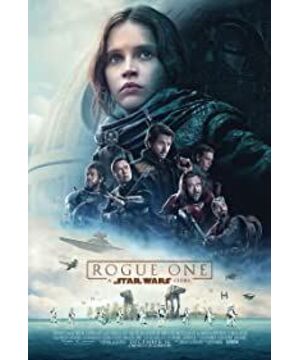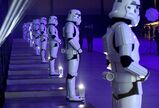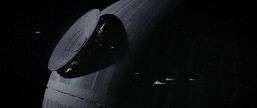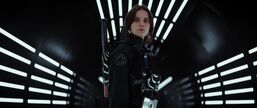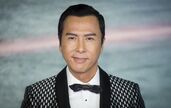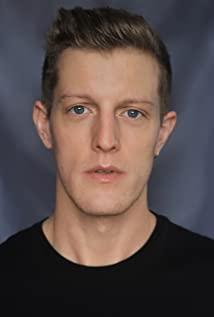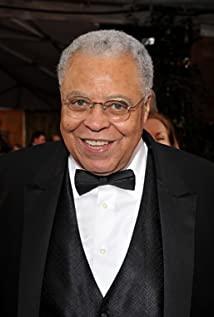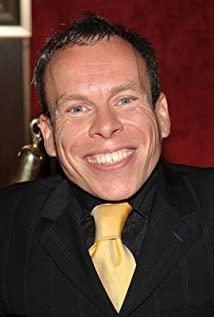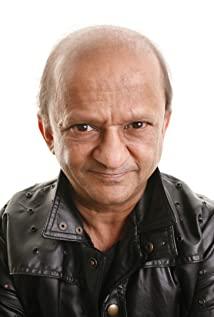Lucasfilm has a huge archive in San Francisco where they catalog almost all of their props. In the words of the staff, everything can be reproduced or recreated. Even as long as you make a phone call and ask for the data information of a certain prop, as small as the pilot's uniform or as big as the blueprint of the Star Destroyer, the people over there can immediately give you what you want. Imagine the huge economic benefits if this archive room could be opened up for Star Wars fans to pay their respects.
Why do I say such a paragraph at the beginning of the article? The first is to illustrate the huge scale of George Lucas' Star Wars legacy, which is simply an inexhaustible treasure trove. Just pull out a piece of text or a setting and you can make a movie. Take this "Star Wars Story: Rogue One" as an example, isn't it just inflated from the phrase "Rebels stole the Death Star blueprint" in the title of "A New Hope"?
The second is that regardless of the quality of the film, it should be appropriate to characterize it as a product of the fan economy. Since the story happened before "New Hope", since the establishment of the project, it has caused various speculations among fans, which old faces will appear in it, until the official gives a clear answer - old faces include Darth Wei. Germany, and its voice, James Earl Jones. Is it too little? Katherine Kennedy, the head of Lucasfilm, ruled that classic characters are too precious to be used sparingly. But even if Darth Vader only shows up a few times, his signature chokehold and lightsaber wielding are enough to keep die-hard fans entertained, not to mention the computer-generated Princess Leia at the end of the credits.
So how should we view this film? Perhaps, "orthodox" and "outside" can be used as two key words. First of all, it inherits Lucas' orthodox "blood line" and is a complete Star Wars movie. Even if it describes the world of rumors, it has little to do with the mainline, the Jedi Knights, and the Skywalker family, but in the final analysis, it is part of the history of the galaxy. At the same time, the film is also unambiguous in terms of details and quality, and strictly abides by the original world view setting. The habits, culture, and even some dialogues of the Star Wars series must correspond to the previous films, even the rules of "no swearing". The same cannot be overstepped.
Secondly, "Rogue One" is only a rumor after all, so some innovative or experimental things can be done on the basis of the original story. For example, in terms of style, this film draws more from World War II films (later Han Solo films draw lessons from western crime films). It can be seen that in addition to the battles between the spaceship fleets in the vast universe, the rebels are in Scarif's battle scenes are full of realism, no force, no lightsaber, but fighter planes, infantry and those conventional weapons. In addition, the addition of handheld photography is also different from the more traditional lenses in the original story, which serves the purpose of serving the story well.
As for the story itself, it can only be said that it is very "Hollywood": a big task that must be completed (stealing the Death Star blueprint), a small branch (Jyn Erso's bond with her father), and a group of different A team member who knows that there is no return (Rebel Squad). Does it look like a remake of "The Expendables" or "Suicide Squad"? The outstanding part of this film is that the members of the rebel army have distinct characteristics, such as the stubborn and rebellious Jean Erso, the captain Cassian Andor, who was once dubious, the blind hero Qilu Yingwei, who has outstanding martial arts skills, and Baez Ma, the weapon master with deep affection. Buses, the mission-faithful pilot Bodhi Rook, and the cold-hearted "traitor" robot K-2SO, all of which are memorable. Even the CP group Chilu and Baez with Chinese elements are very popular among overseas Star Wars fans, calling for a prequel for them.
Of course, the shortcomings of the film are also obvious. Both the story and the characters are relatively rough. Although the supporting characters have distinct external characteristics, their inner depictions are still slightly less delicate, and the similarities are also reflected in the protagonists. Jean Erso's transition from passive avoidance of rebelling against the Empire, to being forced to join the mission, to being impassioned and willing to take risks is a little abrupt. The death of her father may be an opportunity, but it seems that there is no fundamental change that can bring her about. Too much persuasion.
The ancient poem goes: Once a general is successful, all bones will die. Luke Skywalker was able to destroy the Death Star, and it was inevitable that Jean Erso and other little people in the history of the galaxy and even a large number of unsung heroes had contributed. There is an inscription on the Monument to the People's Heroes in Tiananmen Square: "In order to oppose internal and external enemies and strive for national independence and people's freedom and happiness, the people's heroes who have sacrificed in previous struggles will be immortal!" In a sense, "Rogue One" The heroes in China are also worthy of praise and remembrance by future generations.
As a derivative work of a big IP, selling feelings is unavoidable. However, "Rogue One" has played a certain role in connecting and repairing the storyline of the original story. At least it has made the Death Star in "A New Hope" easy to be destroyed by the rebels. It turns out that this is based on the On the basis of the heroic dedication of the predecessors. On the other hand, this film tests how far a rumor can go without the Jedi Knights and the Force, and explores the possibility for more follow-up rumors and the construction of the Star Wars universe. Faced with Disney embracing the "Marvel Universe" on the left and the "Star Wars Universe" on the right, it is really a beautiful painting!
♑
View more about Rogue One: A Star Wars Story reviews


